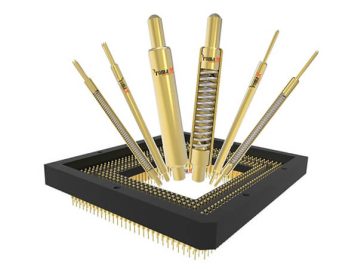Why consider a solder connector rather than a crimp connector?
Connectors serve as Bridges for data transmission, often crimping multiple terminals on the same connector.
After a period of use, the crimped contacts became loose and were pulled apart, eventually causing irreparable damage. It is a little probability event, but it could easily have caused much damage.
The use of solder connectors is most suitable for the conditions and requirements of these projects. It cannot be denied that crimping is a good way to work in assembly connector pins with wire.
But over time, because the connector is in an environment that is not airtight, oxidation can occur and rust can lead to poor connections.
If the device vibrates, the crimp contacts of the connector may also fail. The solder terminal can solder the wire to the pins and reduce the possibility of failure.

How do you decide to crimp or solder?
First, consider the environmental requirements for use. If the ambient temperature is stable and the connector is rarely or never moved, the crimp connector will work well if assembled with the proper tools.
If the connector is in a very harsh environment, use a solder connector to ensure a stable and reliable connection.Second, consideration should include power (current or RF) and frequency.
Crimped connections have higher resistance than solder, and connections with higher power will be subjected to greater heating stress and therefore are more prone to early failure.
Signals at higher frequencies (RF or not) will be significantly affected by any increased resistance that the crimped connector may cause, so a solder connection is recommended.Third, the location of installation.
If outdoor installation is required, it is best to use crimping contacts or screw-locking contacts. Because solder requires more tools.
We will introduce how to solder the wire to the connector. By introducing the operation method and the equipment tools used, you can do it by yourself.

Strip and tidy wire
Striping is the first working station in the cable processing process. The length of the striping size will affect the stability of the next working station. The wire is fine and long must coiling put together.
In the wire processing stage, usually need to strip the insulation layer of wire, small processing plant wire striping is a usually manual operation to achieve, when facing a lot of wire processing production, the required manpower burden is larger.
Because manpower cost is rising, the precision of equipment is higher and higher, people use an automatic peeling machine to complete the peeling operation of wire, eliminating the trouble of manual operation, and saving a lot of time so that the efficiency of wire production is greatly improved, manufacturing cost decreases accordingly.
Strip the jacket and insulation of the cable with an automatic striping device or a manual striping tool to expose the core wires or conductors required for cable assembly processing.For a single insulated single-core cable, only one step is needed to complete the whole operation of striping.
For multi-core cables with both jacket and insulation, striping is divided into two steps: jacket stripping and insulation stripping. The stripping jacket operation is divided into stripping the outer jacket and stripping the inner jacket.
If the cable has a shield layer, the exposed braided shield layer needs to be turned back after the outer jacket is removed, and then the filler such as polyester film, filling rope, and tearing line is removed.

Attention:
- In the process of stripping the outer jacket, pay attention to not damaging the shielding layer (copper braided net or aluminum foil mylar), insulation, core conductor, and cable jacket that does not need to be processed;
- For the jacket sections (such as the empty end of the cable) that are still visible after the cable assembly is processed, the sections should be tidy, irregular sections should not be allowed, and the insulation layer should not be crushed.
- The section of the exposed core wire or conductor must be tidy. No untidy or broken copper wire is allowed. If there are many wires broken, judged as an unqualified product.
- Do not touch the stripped conductor with your hands, and the stripped conductor must be processed in time to prevent oxidation on the conductor’s surface.

Soldering Introduction
- 1. Definition of soldering terms
- Soldering SOP
- Soldering general requirements
- Solder standard
- Solder adhesion strength
- Soldering equipment maintenance

Definition of soldering terms
- Bridging: Form soldering that does not require conductive paths.
- Dip soldering: Solder part in contact with the surface of soldering liquid for soldering purposes.
- Eyelet: Hollow tube that is inserted into a printed circuit board or end board to provide electrical transmission or mechanical support for component pins.
- Flux: This is solid or liquid, during the welding process, to enhance the adhesion of the soldered surface and protect the solder joint.
- Solder projection: The formation of unwanted protrusions, such as icicles, nodules, and spikes, on the outside of the solder.
- Solderability: How easily a metal surface can be soldered by molten solder.
- Joint: A joint of identical or dissimilar metals formed by the application of molten solder.

Soldering machine operation instructions
- Step 1: Thread the tin wire into the tin outlet
- step 2: Turn on the power switch
- step 3: Adjust the tin extractor
- Step 4: Adjust the position of the universal arm to match the soldering wire
- Step 5: Adjust the soldering iron temperature
- step 6: Adjust speed and quantity
- Step 6: The size of the soldering iron head can be changed according to the soldering product

Soldering SOP
First, adjust the soldering iron and tin device, preheat the iron for about 10 minutes, and general solder joint temperature is controlled at 360°C ± 20°C, If the temperature is too high, tin is easy to oxidize and produce impurities, but also easy to scald the core wire skin;
If the temperature is too low, fluidity is not good, and easy to causes cold soldering, fake soldering; the Tin wire is tin-lead alloy, the best ratio of tin to lead is 6:4, adjust tin output as needed.
The soldering tip often needs to be cleaned with a water-soaked sponge. Contact the soldering iron with the solder joint and start the foot switch for soldering.
The soldering time should be kept at 1 to 2 seconds and the residence time should not be too long to avoid the poor quality of the solder joint.

Soldering general requirements
- The soldering position is not allowed to support flux or other debris.
- The appearance of the soldering position must have the gloss characteristic of the solder alloy.
- There shall be no soldering bump, bridge, crack, virtual soldering, hole, soldering splash, and other phenomena, and no deformation caused by mechanical tools.
- The outline of the soldering lead or pin must be visible during soldering.
- The solder surface must be concave and continuously and evenly attached to the metal surface.
- There must be enough distance between the insulation skin and the soldering place. If the insulation skin penetrates the solder, it will be classified as an unqualified product.
- Slight discoloration of insulation due to heat is allowed. Breakage, scorch, decomposition, and deformation of insulation are considered unqualified products.

Solder standard
(1) Copper wire exposed more than 0.5mm rejected
(2) The insulated part of the core wire is rejected when entering the pin
(3) Cold soldering rejected
(4) Too many broken core wires rejected
(5) A solder joint larger than the outer diameter of insulation of the core wire is not acceptable
(6) Rejected if the sharp point exceeds 0.7mm
(7) Lap solder rejection
(8) Solder joints should be at least 1/5 of the outer diameter of the pin

Solder adhesion strength
- 30AWG: 1Kg MIN
- 28AWG: 1.5Kg MIN
- 26AWG: 2.4Kg MIN
- 24AWG: 3Kg MIN
- 22AWG: 5Kg MIN
- 20AWG: 6Kg MIN
- 18AWG: 9Kg MIN
- 16AWG: 11Kg MIN

Soldering equipment maintenance
- Machine cleaning: Always keep clean during operation, and wipe clean after the operation.
- Oiling anti-rust maintenance: Tin gear device and universal arm regularly oiling maintenance.
- Soldering iron head maintenance: To avoid a collision, more than ten minutes of unused need to be coated with a layer of tin to prevent rust.
- Electrical inspection: Check switch, electric heating, temperature control, fuse, foot switch, etc.
- Mechanical function testing: check whether the tin device and universal arm joint fixing button are normal, and clean the tin tube regularly.
 Over 15 Years of Expertise
Over 15 Years of Expertise FREE samples provided to ensure product satisfaction
FREE samples provided to ensure product satisfaction Rapid Turnaround: Mass Production Complete in 15 - 20 Days
Rapid Turnaround: Mass Production Complete in 15 - 20 Days











